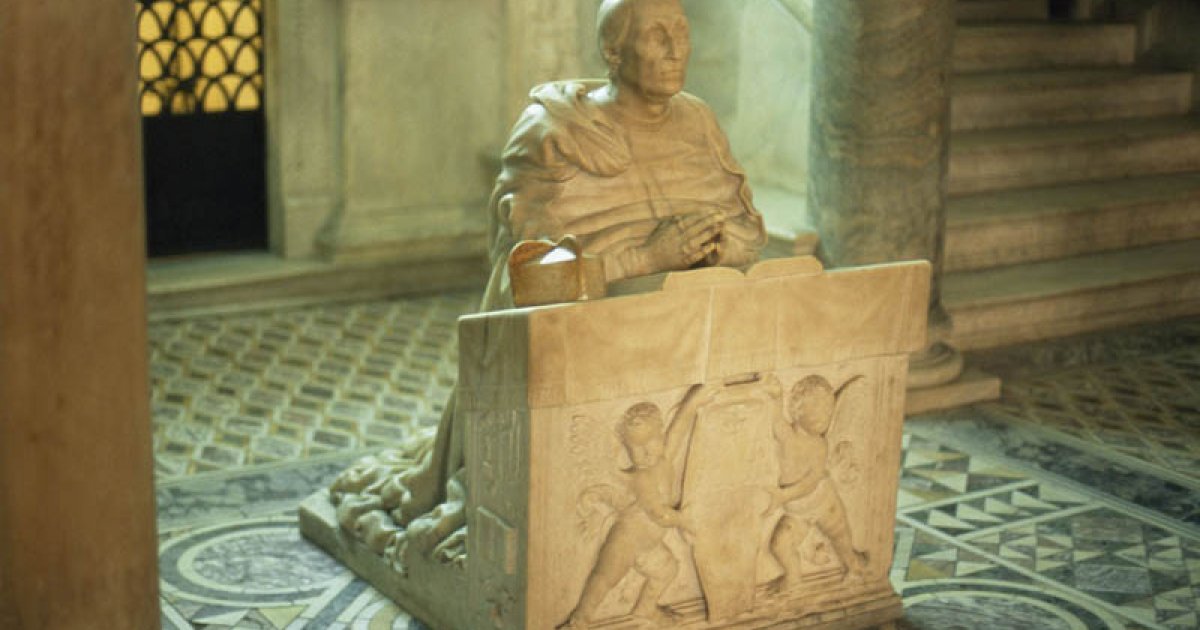CATHEDRAL, Succorpo Or Carafa Chapel
 Language: English / USA
Language: English / USA
Now let's get back to the Cathedral and continue along the right nave up to the transverse arm: here in the second chapel known as the Chapel of the Assumption, you'll find the altarpiece with The Assumption of the Virgin: a great, prestigious work by Pietro Perugino that was commissioned by Cardinal Oliviero Carafa, who you can see praying in the portrait.
The first chapel is on the left at the back of the church and is the chapel that has best preserved its original 14th-century Gothic style appearance from the Angevin age. The tombs hold the remains of some members of the Minutolo family, including that of Cardinal Filippo. A celebrated novel of Boccaccio's Decameron takes place precisely in this chapel, where a naive young man is locked in a tomb along with the cardinal who has just died!
The walls have a cycle of well-preserved frescoes from the early 1300s, which is said that Giotto himself added a few brushstrokes to.
Other 14th-century frescoes can be seen in the chapel next door that's dedicated to Saint Aspren, the first bishop of Naples.
Now admire the sculpture on the high altar: it shows Our Lady of the Assumption and its sculptor is famous for having created the central group of the Trevi Fountain in Rome.
Still at the level of the cross arm, go down a double-stairway to Chapel Carafa, which was built when the relics of Saint Januarius were transferred here from the Monastery of Montevergine at the end of the 15th century. This is a rare example of Renaissance architecture: according to some it could have even been designed by the great Donato Bramante, the architect of St. Peter's Basilica. As you can see, the chapel consists of a rectangular crypt divided into three naves by marble columns, with a paneled ceiling that's also marble and is decorated with bas-reliefs depicting Saints, Doctors of the Church, the four evangelists, and the Madonna with Child. Look at the virtuosity with which the cloak that opens up behind the imposing statue of Oliviero Carafa is carved, who is kneeling in prayer while looking toward the altar where the bones of Saint Januarius are kept.
FUN FACT: Saint Januarius is always depicted as a tiny young man. The bones preserved in the tomb were analyzed in 1988 and revealed a very old skeleton belonging to a male individual between the ages of 30 and 35, about 1.65 meters tall.



